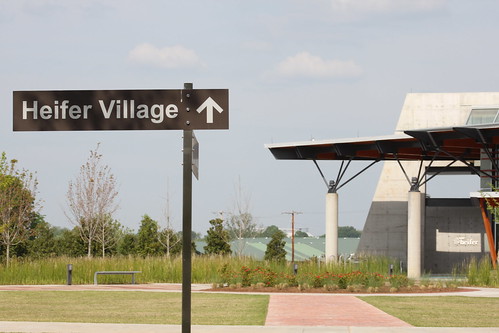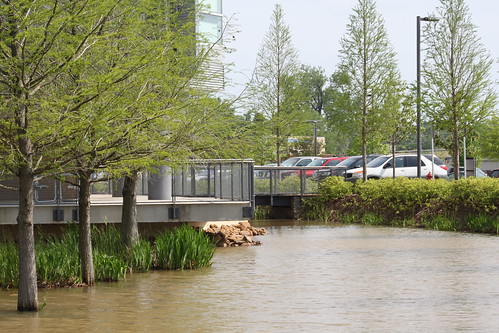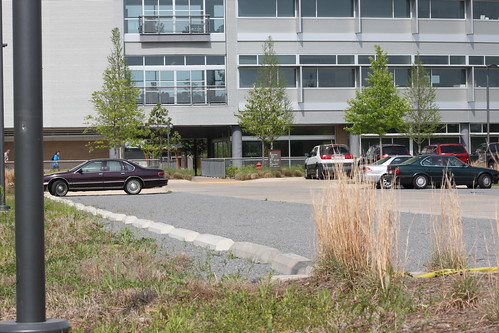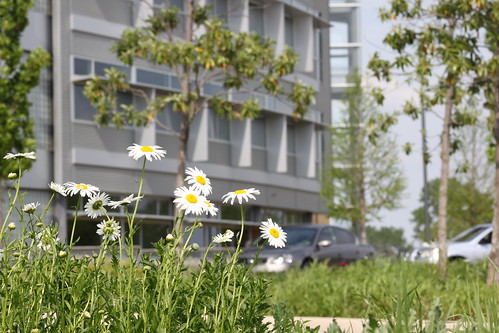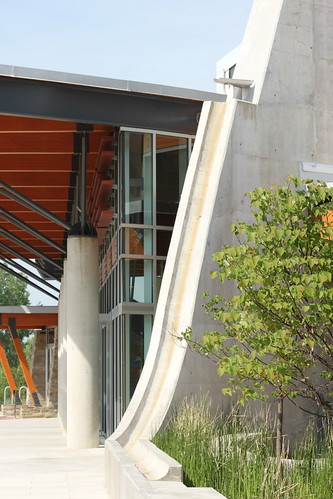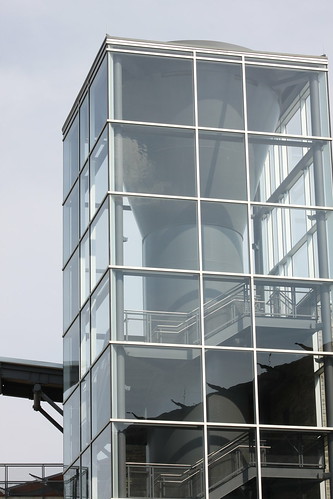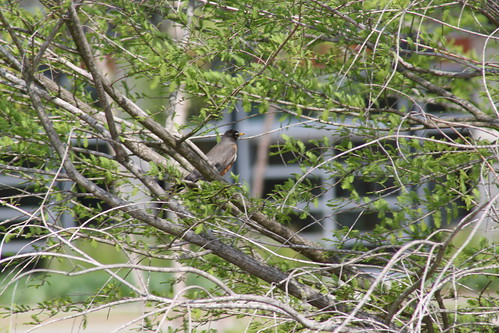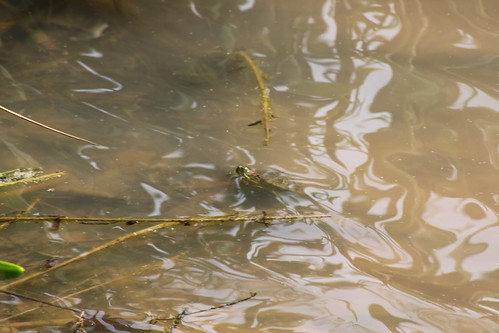cross-posted from Sum of Change
The Heifer International Headquarters in Little Rock, Arkansas is one of the greenest buildings in the world, by many standards. Since my drive across the country was bringing me right through Little Rock, I had to drop in to see this.
First, you should understand who Heifer International is. They are a non-profit that works in struggling communities throughout the world to provide people with tools to improve their lives. Often that includes livestock and training in a unique loan agreement where one of the livestock's offspring is to be given to another needy family. They call that "Passing on the Gift – a cornerstone of our mission that creates an ever-expanding network of hope and peace."
While doing this work it struck them that it would all be in vain if we, as a society, do not take proactive steps to make all our communities more sustainable. “If we’re going to have a lasting impact on ending world hunger, then everything we do must renew the earth and not deplete it,” said Jo Luck, Heifer’s president and CEO.
Everything about this building, from the initial plot of land to what we have today, was highlighted by sustainability. The site they chose to build on was picked because it was what is called a brownfield site. Before anything could be done, the place had to be cleaned. They hauled off 75,000 tons of earth, and made the site into a wetland.
They used as much of the material that was there as possible, grinding up concrete from abandoned buildings to make gravel for the construction process. They relied on local businesses for many materials, such as Ace Glass Co who are literally across the street. They used bamboo for the wood floors which grows rapidly and is recyclable. The rugs are recycled carpeting, that can themselves be recycled. They are designed in squares, like tiles, so that money and resources can be saved by replacing squares when damage is done and not the whole rug.
The wetland area "controls, stores and reuses surface groundwater." To prevent pollution in the water, there is "an innovative, permeable-surface parking lot next to the building eliminates common stormwater runoff problems."
They also use gravel to filter liquids that drop off parked cars:
Wild flowers are allowed to grow freely in parking lot medians so roots grow far and create another natural filter:
The roofs catch water, are white to avoid evaporation, and are made out of a type of pool surface that makes the water bead easier. Of course, all the water is collected and reused:
That water is dumped into a filter that, at first glance, appears to be no more than some stones and vegetation:
And, of course, to keep all this water they have a four story water collection tower:
This does not provide drinking water but could be retrofitted to filter to that high a degree.
These measures have created a wetlands that now serves as home to some animal friends. Fish were added early on, but turtles and birds have moved in on their own and apear to be thriving.
Moving inside, you immediately notice how long and narrow the building is. It is only 64 feet wide for a very specific reason: sunlight. Windows can provide decent sunlight up to approximately 30 feet in. The narrow building allows everyone inside to rely heavily on sunlight. The building is then positioned so that the sun is never facing the two long walls. This way you have no direct sunlight making certain rooms hotter than others. The indoor lights are on sensors and become lighter or darker depending on how bright it is outside.
The building uses a creative heating and cooling system, venting from the floor and not the ceiling. They have high ceilings and venting from the floor allows them to only heat and cool the bottom part of the room, saving energy that would otherwise be wasted on space no one will ever occupy.
Moving back to the roofs, we learn that they are slanted in relation to the position of the sun so as to grab more heat from the sun in the winter months and less in the summer:
The Heifer International Headquarters teaches us that a little green architecture and some good intentions can go a long way to developing a more sustainable society. This building uses over 50% less energy than buildings of comparable size and use.
Friday, April 16, 2010
Heifer International HQ: One of the Greenest Buildings in the World
blog comments powered by Disqus
Subscribe to:
Post Comments (Atom)

